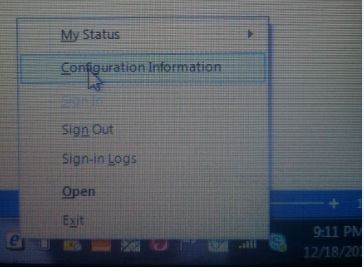Exchange 2016 / Lync – Troubleshooting Conversation History
Let’s take a look at troubleshooting Conversation History – Exchange/Lync.
There are multiple points that should be checked:
-
From Lync client side there is an option that should be checked: Tools – Options – Personal – Save IM Conversations in my email conversation history folder

This option may be set by user or by client policy using Set-csclientpolicy by setting the parameter “EnableIMAutoArchiving”
Set-csclientpolicy –identity ClientPolicyName -EnableIMAutoArchiving [$True, $False, NULL]
- $True: that sets the checkbox to on and grays out the option that unable the user to change it.
- $False: that sets the checkbox to off and grays out the option that unable the user to change it.
- NULL “the default option”: that doesn’t set the checkbox and the user should set it if want.
-
From Outlook side if the number of folders is more than 1000 folder that will stop conversation history function
That can be determined from Exchange management shell “(Get-mailboxfolderstatistics “mailbox”).count”
-
The EWS should be configured correctly for the Lync and Exchange integration; the Lync client should retrieve the EWS information from the DNS records of the auto discover and web services:
https://<smtp domain>/autodiscover/autodiscover.xml
https://autodiscover.<smtp domain>/autodiscover/autodiscover.xml
http://autodiscover.<smtp domain>/autodiscover/autodiscover.xml
Auto discover SRV record (_autodiscover._tcp.smtpdomain)
To check the EWS functionality you should check the below:
-
From Lync client side:
Press shift + right click on Lync from taskbar

-
Check the EWS URL that should be exist:

-
From Exchange Side:
- Check if the EWS virtual directory is configured by command:
“Get-WebServicesVirtualDirectory | FL”
And if not configured you should set it by the command:
“Set-WebServicesVirtualDirectory -Identity “ServernameEWS default web site” -ExternalURL “https://ews.domain.name/ews/exchange.asmx” -InternalURL “https://ews.domain.name/ews/exchange.asmx”
-
Set the authentication type of your Autodiscover and EWS Virtual directories to “BasicAuthentication” by the below commands:
[Set-autodiscovervirtualdirectory -identity “autodiscover default website” -Basicauthentication $True]
- Check if the EWS virtual directory is configured by command:
[Set-Webservicevirtualdirectory -Identity “ServernameEWS default web site” -Basicauthentication $True]
Ratish Nair
Microsoft MVP | Office Servers and Services
Team @MSExchangeGuru


